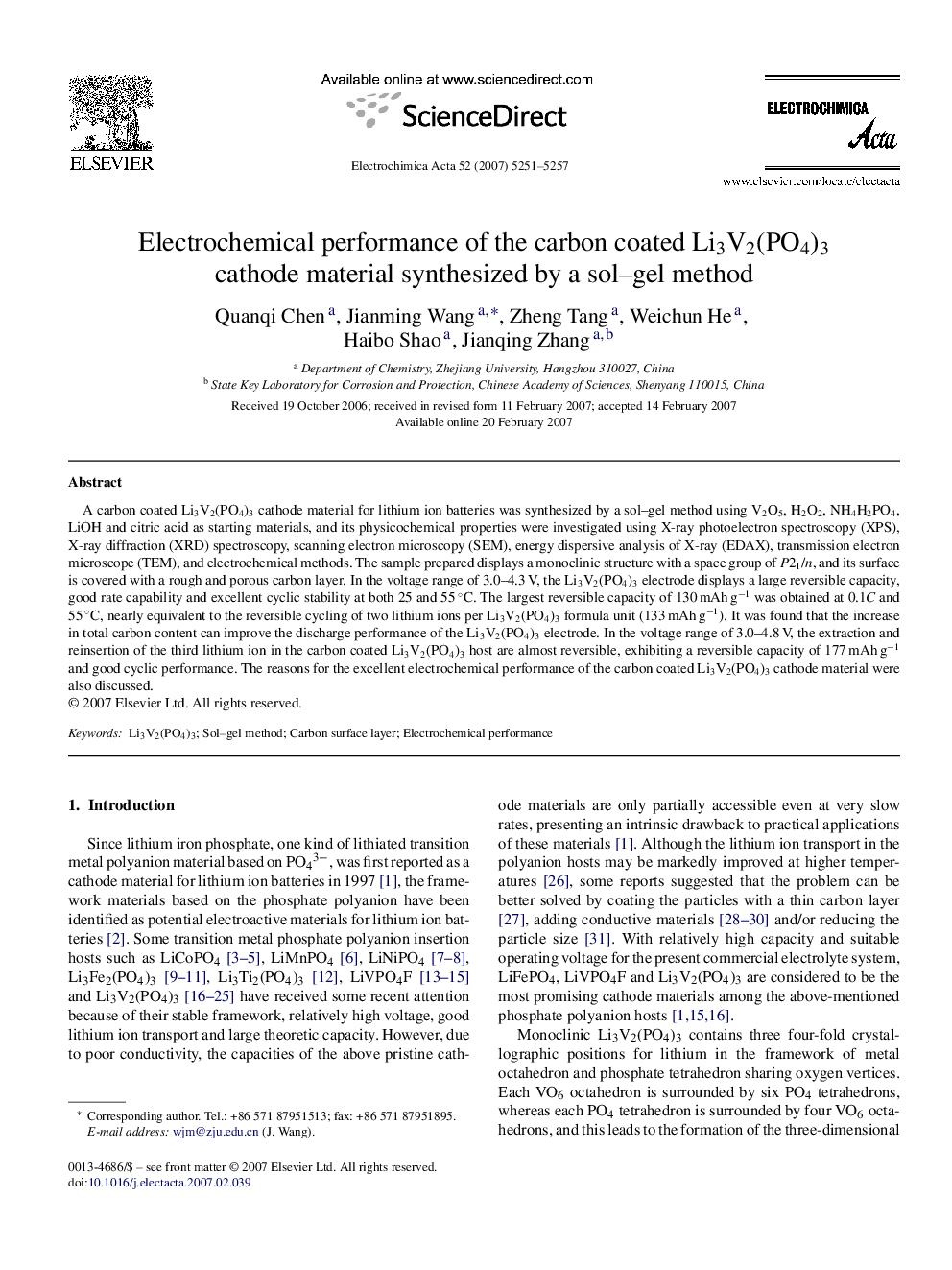| Article ID | Journal | Published Year | Pages | File Type |
|---|---|---|---|---|
| 194460 | Electrochimica Acta | 2007 | 7 Pages |
A carbon coated Li3V2(PO4)3 cathode material for lithium ion batteries was synthesized by a sol–gel method using V2O5, H2O2, NH4H2PO4, LiOH and citric acid as starting materials, and its physicochemical properties were investigated using X-ray photoelectron spectroscopy (XPS), X-ray diffraction (XRD) spectroscopy, scanning electron microscopy (SEM), energy dispersive analysis of X-ray (EDAX), transmission electron microscope (TEM), and electrochemical methods. The sample prepared displays a monoclinic structure with a space group of P21/n, and its surface is covered with a rough and porous carbon layer. In the voltage range of 3.0–4.3 V, the Li3V2(PO4)3 electrode displays a large reversible capacity, good rate capability and excellent cyclic stability at both 25 and 55 °C. The largest reversible capacity of 130 mAh g−1 was obtained at 0.1C and 55 °C, nearly equivalent to the reversible cycling of two lithium ions per Li3V2(PO4)3 formula unit (133 mAh g−1). It was found that the increase in total carbon content can improve the discharge performance of the Li3V2(PO4)3 electrode. In the voltage range of 3.0–4.8 V, the extraction and reinsertion of the third lithium ion in the carbon coated Li3V2(PO4)3 host are almost reversible, exhibiting a reversible capacity of 177 mAh g−1 and good cyclic performance. The reasons for the excellent electrochemical performance of the carbon coated Li3V2(PO4)3 cathode material were also discussed.
